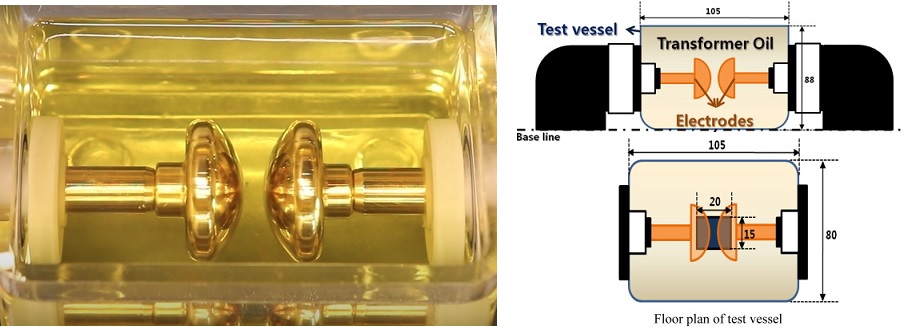Transformer Oil Recovery Solutions: Affordable Maintenance and Sustainability
Wiki Article
Choosing the Right Dielectric Transformer Oil for Maximum Performance
The option of dielectric transformer oil is a crucial decision that affects not just the performance and integrity of electrical systems but likewise their ecological impact. Key buildings such as dielectric strength, thickness, and oxidation security have to be meticulously examined to guarantee ideal efficiency under varying conditions. Furthermore, the surge of biodegradable oils provides an opportunity to improve sustainability while sticking to regulatory criteria. As we explore the nuances of various oil kinds and their ramifications, it ends up being noticeable that the ideal selection can bring about considerable operational advantages, motivating a closer exam of ideal methods in this essential area.
Significance of Dielectric Oil
Dielectric oil plays an important duty in the procedure and long life of transformers, serving as both an insulator and a coolant. Its main feature is to avoid electrical discharges between real-time elements, thus protecting the stability of the transformer. The shielding buildings of dielectric oil aid preserve a secure electrical environment, which is necessary for the efficient performance of transformers operating at high voltages.Along with insulation, dielectric oil successfully dissipates heat created throughout the transformer's procedure. This air conditioning capability is important, as extreme warm can result in minimized efficiency and early failure of the transformer parts. The oil circulates within the transformer, soaking up warmth and moving it to a cooling system or the surrounding setting, therefore preserving optimum operating temperature levels.
Moreover, dielectric oil adds to the total integrity and safety and security of transformers. By decreasing the danger of electrical faults and overheating, it improves the functional life-span of the equipment. Normal tracking and upkeep of dielectric oil quality are necessary to make sure that these functions are performed efficiently, inevitably leading to enhanced effectiveness and lowered functional expenses in electrical power systems.
Trick Quality to Take Into Consideration
When choosing transformer oil, numerous essential buildings should be meticulously examined to ensure optimal performance and integrity. First of all, the dielectric stamina of the oil is vital; it shows the oil's capability to stand up to electric anxiety without breaking down. A greater dielectric stamina improves the transformer's effectiveness and safety.
Second of all, the thickness of the oil plays a crucial duty in warm dissipation. Oils with appropriate viscosity guarantee reliable flow and air conditioning within the transformer, protecting against getting too hot and maintaining efficiency.
Oxidation security is an additional important building, as it determines the oil's resistance to degradation over time. Oils with exceptional oxidation security keep their efficiency attributes longer, prolonging the life of the transformer. Lastly, the existence of ingredients can improve numerous buildings of the oil, such as anti-corrosiveness and foam reductions, more adding to functional durability (used transformer oil).
Kinds Of Transformer Oils
Understanding the different sorts of transformer oils is necessary for selecting one of the most ideal choice for particular applications. Transformer oils primarily come under two categories: mineral oils and synthetic oils.Mineral oils, originated from refining petroleum, are one of the most generally made use of dielectric fluids. They have superb protecting transformer oil recovery residential or commercial properties and are affordable, making them a popular choice in typical transformer applications. Within this category, there are better differences based upon additives, such as anti-corrosive and antioxidant agents, which enhance performance and durability.
Artificial oils, on the other hand, are engineered fluids made to provide superior thermal security and oxidation resistance. Typically more pricey than mineral oils, artificial choices can provide better efficiency in extreme conditions, making them ideal for high-temperature or high-voltage transformers.
Another arising classification is naturally degradable transformer oils, stemmed from eco-friendly resources like vegetable fats. These options are gaining grip because of their environmental advantages, although they might not yet match the performance metrics of traditional oils.
Inevitably, choosing the right transformer oil relies on the certain operational needs, price considerations, and preferred performance features of the application available.
Ecological Influence and Laws
The ecological effect of transformer oils has come under boosting scrutiny as governing frameworks advance to deal with sustainability concerns. Typical mineral-based transformer oils posture a number of ecological risks, consisting of possible contamination of dirt and water bodies in case of leaks or spills. The poisoning of these oils can cause lasting eco-friendly harm, requiring stringent policies to mitigate danger.In feedback to these challenges, regulative bodies are applying more durable standards governing the use and disposal of transformer oils. These laws commonly motivate the adoption of biodegradable and much less hazardous alternatives, such as ester-based dielectric liquids. Such alternatives not just reduce ecological influence but likewise improve security in regards to fire and health dangers.
In addition, industry stakeholders are progressively held accountable for the lifecycle administration of transformer oils, from manufacturing to disposal. Conformity with ecological regulations is not only a legal commitment yet also an important element of corporate social responsibility. As the demand for sustainable practices grows, firms are urged to stay informed about developing policies and take into consideration the ecological effects when picking transformer oils. This aggressive strategy is vital for straightening with both governing needs and social assumptions bordering ecological stewardship.
Finest Practices for Selection
In light of the raising governing stress and ecological considerations bordering transformer oils, choosing the ideal dielectric liquid needs cautious analysis of various elements. Beginning by evaluating the details operational needs of the transformer, including voltage levels, lots conditions, and ambient temperature levels. Each application might demand distinctive oil residential properties to guarantee optimum performance and integrity.Following, take into consideration the dielectric strength of the oil, which straight influences its protecting capacities. A greater dielectric stamina typically equates to enhanced security and performance (transformer oil recovery). Furthermore, analyze the thermal conductivity of the liquid, as this affects warm dissipation and general transformer air conditioning
One more critical aspect is the oil's environmental effect. Choose biodegradable or much less unsafe liquids when feasible, lining up with sustainability objectives and compliance with policies. Make sure that the picked oil has a proven track document in similar applications, as this can offer understandings into its long-term performance and integrity.
Verdict
Picking the ideal dielectric transformer oil is crucial for optimizing performance and making sure reliability in electrical systems. The adoption of eco-friendly oils not only supports sustainability however likewise complies with regulatory requirements.
In enhancement to insulation, dielectric oil effectively dissipates warmth created during the transformer's procedure.In addition, dielectric oil contributes to the general integrity and security of transformers.Choosing the appropriate dielectric transformer oil is crucial for enhancing efficiency and making certain reliability in electric systems.
Report this wiki page